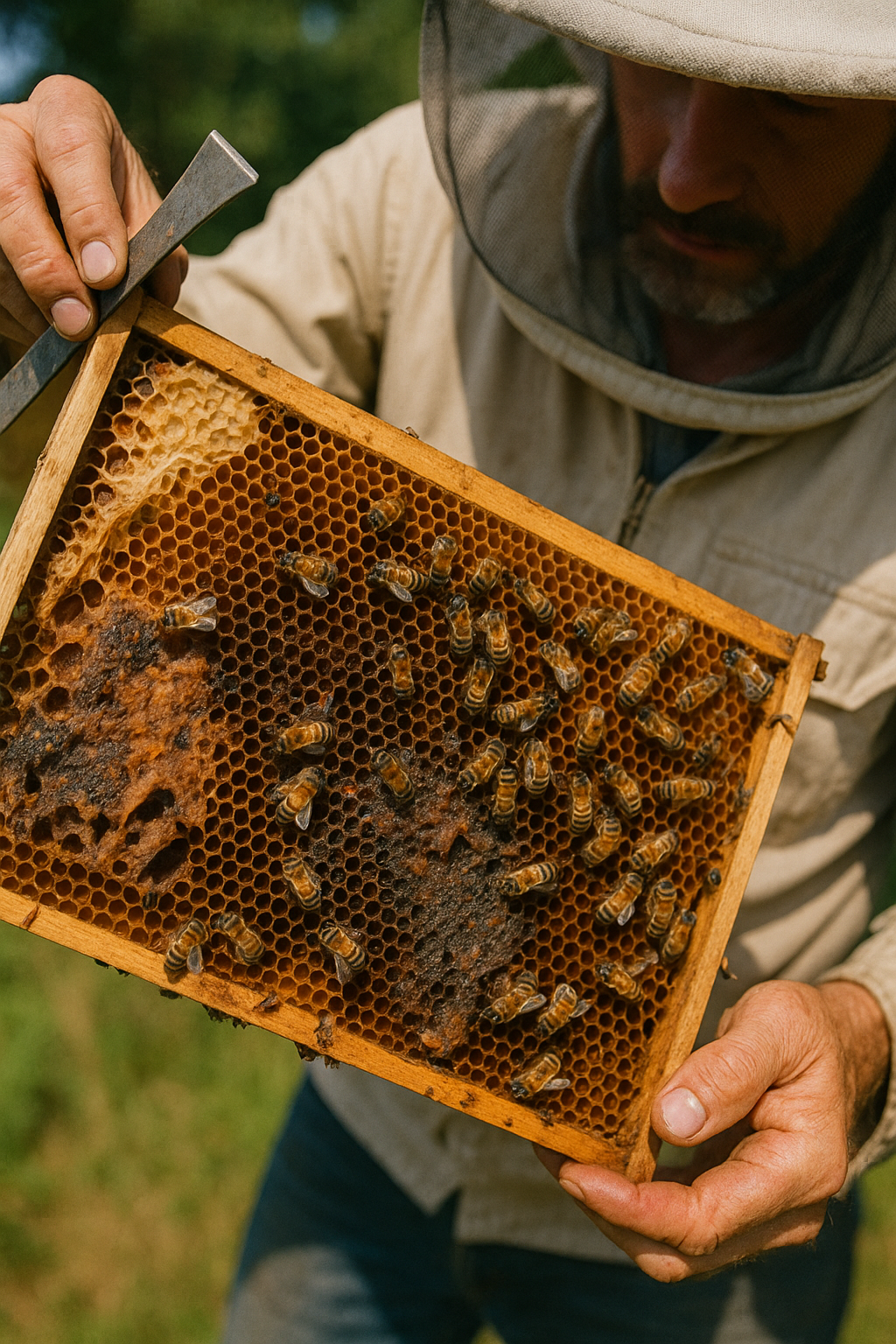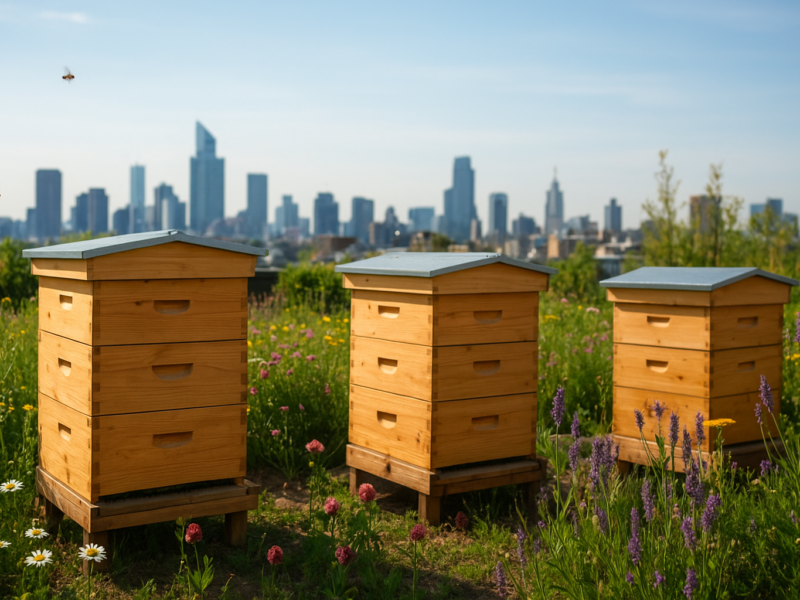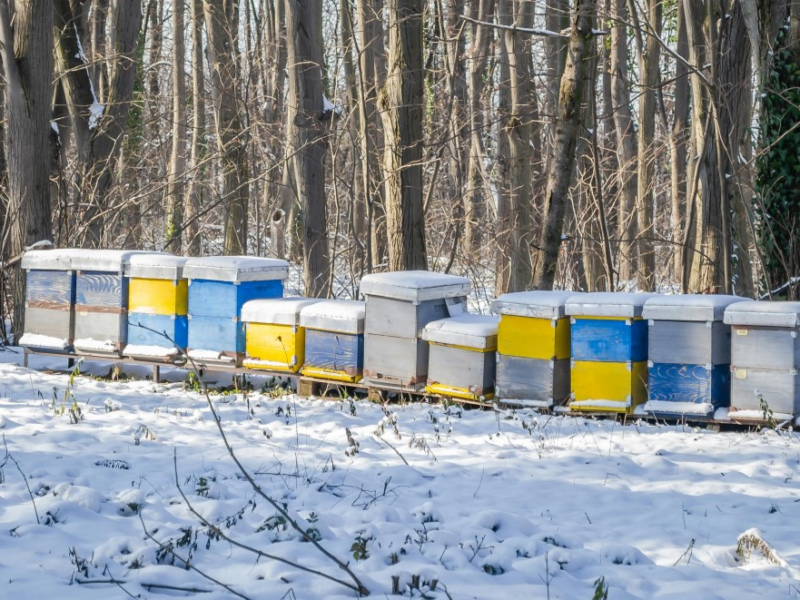Introduction
Beekeeping is both rewarding and challenging. While honeybees are incredibly resilient creatures, they are not immune to pests and diseases that can threaten the health of the hive. From destructive parasites like Varroa destructor mites to bacterial diseases such as American foulbrood, every beekeeper must learn how to identify early warning signs and take action to protect their colonies.
This comprehensive guide explores the most common hive pests and diseases, how to recognize them, and practical, sustainable solutions for prevention and treatment.
1. Understanding the Importance of Hive Health
Healthy hives are the foundation of successful beekeeping. A single colony can contain between 20,000 and 80,000 bees, all working together in a delicate balance. When pests or diseases enter this system, productivity drops, honey yields suffer, and in severe cases, entire colonies collapse.
Beekeepers must:
- Inspect hives regularly.
- Learn to recognize abnormal behavior.
- Apply integrated pest management (IPM) practices.
- Keep detailed records of hive health.
By staying proactive, you can often prevent problems before they escalate.
2. Common Hive Pests
🕷️ Varroa Destructor Mites
Varroa mites are considered the biggest threat to honeybees worldwide. These external parasites attach themselves to bees, feeding on their fat bodies and weakening their immune systems.
Symptoms:
- Bees with deformed wings.
- Reduced brood production.
- Visible reddish-brown mites on adult bees or brood.
Management Strategies:
- Regular mite checks (sugar shake, alcohol wash).
- Using screened bottom boards.
- Application of organic acids (oxalic or formic acid).
- Breeding mite-resistant bee strains.
🐝 Wax Moths (Galleria mellonella and Achroia grisella)
Wax moths target weak colonies, destroying comb, honey, and stored equipment.
Symptoms:
- Webbing in frames.
- Cavities in comb.
- “Chewed” wax appearance.
Prevention:
- Keep colonies strong (wax moths rarely affect strong hives).
- Freeze comb before storage.
- Store frames in well-lit, ventilated areas.
🐜 Small Hive Beetles (Aethina tumida)
Native to Africa, SHBs have spread to many countries, causing significant hive damage.
Symptoms:
- Adult beetles visible on comb.
- Slime in honey supers (“slimed honey”).
- Fermented smell.
Prevention & Control:
- Use beetle traps.
- Maintain strong colonies.
- Remove weak or abandoned hives.
🐀 Other Pests
- Ants: Compete for honey and sugar water.
- Wasps & Hornets: Attack weak colonies.
- Mice: Enter hives in winter for warmth, damaging comb.
Preventive steps include hive stands, entrance reducers, and physical barriers.
3. Common Hive Diseases
🦠 American Foulbrood (AFB)
A bacterial disease caused by Paenibacillus larvae. Highly contagious and often fatal.
Symptoms:
- Sunken, perforated brood cappings.
- Brown, ropey larval remains (rope test).
- Foul odor.
Treatment:
- Unfortunately, burning infected colonies is often required.
- Use AFB-resistant equipment.
- Practice strict hive hygiene.
🦠 European Foulbrood (EFB)
Caused by Melissococcus plutonius, less severe than AFB but still dangerous.
Symptoms:
- Twisted larvae in cells.
- Yellow to brown discoloration.
- Spotty brood patterns.
Management:
- Antibiotic treatments (where legally allowed).
- Requeening with resistant queens.
- Reducing stress in colonies.
🍯 Nosema Disease
Caused by Nosema apis or Nosema ceranae (fungal parasites).
Symptoms:
- Dysentery (brown streaks on hive).
- Weak, sluggish bees.
- Reduced honey production.
Prevention:
- Good hive ventilation.
- Regular comb replacement.
- Feeding with supplements (e.g., probiotics).
🦠 Chalkbrood
A fungal disease affecting brood, caused by Ascosphaera apis.
Symptoms:
- White “mummy” larvae in cells.
- Hard, chalky larval remains outside the hive.
Prevention:
- Strong colonies with good airflow.
- Replace old combs.
- Use resistant bee strains.
4. Integrated Pest Management (IPM) for Beekeepers
IPM is a sustainable approach that combines biological, mechanical, and chemical controls.
Key Principles:
- Monitor colonies regularly.
- Use mechanical barriers (screened boards, traps).
- Introduce biological controls (nematodes for wax moths, beetle traps).
- Apply chemical treatments responsibly and sparingly.
By reducing chemical dependency, beekeepers can support healthier bees and ecosystems.
5. Preventative Hive Management Tips
- Keep colonies strong and well-fed.
- Replace 20–30% of old combs annually.
- Sterilize used equipment before reintroduction.
- Ensure good ventilation and sunlight exposure.
- Avoid spreading diseases through shared equipment.
6. The Future of Hive Health
With global threats like climate change, pesticide use, and habitat loss, hive health is becoming more complex. Researchers are exploring:
- Genetic resistance to mites.
- Natural treatments (essential oils, organic acids).
- Improved hive designs to resist pests.
Beekeepers who stay informed and proactive will be best equipped to safeguard their colonies.
Conclusion
Dealing with pests and diseases is an essential part of responsible beekeeping. While challenges such as varroa mites, wax moths, and bacterial infections can seem overwhelming, knowledge and proactive management are a beekeeper’s strongest tools. By practicing good hive hygiene, monitoring colonies regularly, and adopting sustainable pest management strategies, you can protect your bees and ensure thriving, productive hives for years to come.



